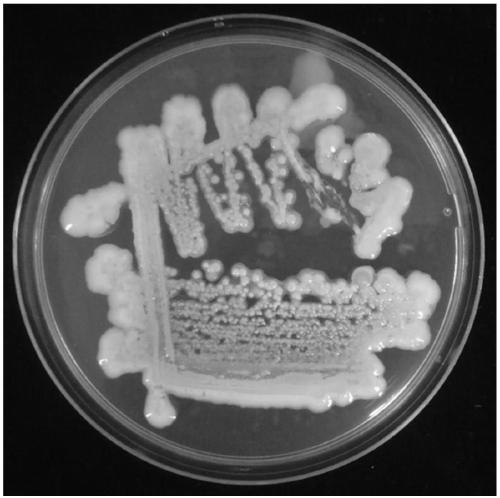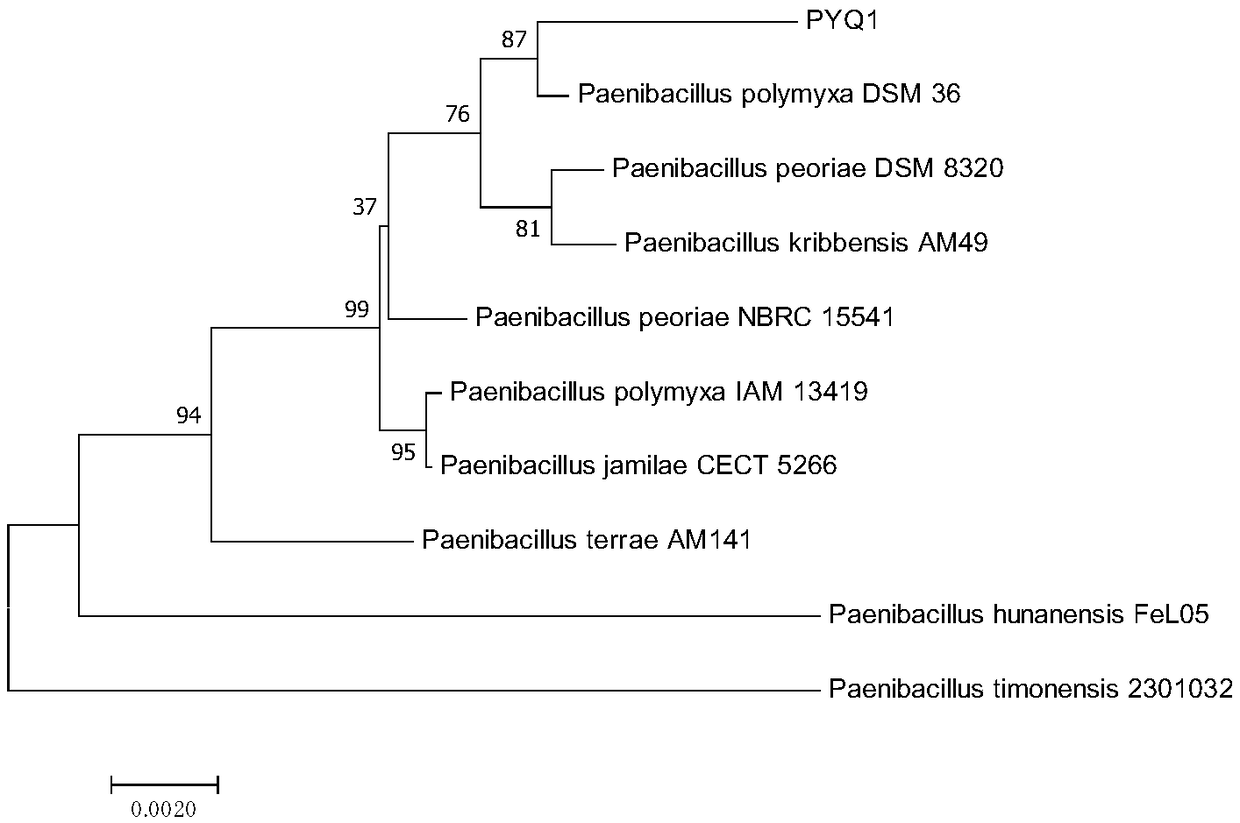Paenibacillus elgii strain for producing polysaccharide with effect of after-sun repair and application of paenibacillus elgii strain
A Bacillus sp., post-sun repair technology, applied in bacteria, cosmetic preparations, preparations for skin care, etc. Active ingredients are easily available and inexpensive
- Summary
- Abstract
- Description
- Claims
- Application Information
AI Technical Summary
Problems solved by technology
Method used
Image
Examples
example 1
[0022] Example 1: Extraction and content determination of exopolysaccharides produced by the above strains
[0023] An appropriate amount of the above strains is picked from the sugar-producing solid medium and inoculated into the sugar-producing fermentation medium. At 30°C, shake culture at 150 rpm for 48 hours to obtain a fermentation broth. figure 1 It is the plate culture trait of the bacterial strain PYQ1 of the present invention.
[0024] Among them, the used sugar-producing solid medium components are: sucrose 20g / L, tryptone 10g / L, yeast powder 5g / L, Na 2 HPO 4 12H 2 O 3g / L, agar 20g / L, and the balance is distilled water. The components of the sugar-producing fermentation broth used are: sucrose 50g / L, tryptone 5g / L, yeast powder 1g / L, Na 2 HPO 4 12H 2 O 3g / L, the balance is distilled water.
[0025] The above fermentation broth was centrifuged at 4000 g for 10 min to remove the bacteria to obtain the supernatant. Add 1 / 4 volume of Sevage solution (n-butanol:...
example 2
[0027] Example 2: Identification of microbial strains of the present invention
[0028] Such as figure 2 The strain shown is purple by Gram stain and is Gram-positive. According to the steps of TakaraBacteria Genomic DNA Extraction Kit (TakaraBacteria Genomic DNA Extraction Kit) to extract the total DNA of the strains described in the present invention, amplify the 16S rDNA gene of the bacteria with the general primers 27F and 1492R, recover the amplified products and carry out Sequencing, identification of bacterial species by determining the sequence of 16S rDNA. The obtained sequence results were compared by Blast at NCBI, and the recognized standard sequence data homologous to the 16S rDNA of the strain was obtained from the GenBank database. The sequence similarity was calculated using MEGA software and the Neighbor-Joining algorithm (Neighbor-Joining) was used as the system developmental analysis.
[0029] The phylogenetic tree of the constructed strain is as follows...
example 3
[0030] Example 3: Use of the above-mentioned polysaccharides as a repairing agent for sun damage
[0031] HaCaT cells in the logarithmic phase were collected and inoculated in a 96-well plate with 5000 cells per well, and cultured in a 37°C, 5% CO2 incubator. Cells were divided into control group, UV model group, polysaccharide group (1mg / mL), octocrylene group (8%) and Vc group (1mg / mL), wherein the latter two groups were positive controls, and each group repeated 3 wells. After the cells were cultured for 24 hours, the culture medium was replaced with phosphate buffered saline (PBS) and irradiated with UV light, and the control group was wrapped with tinfoil to avoid light. Aspirate the PBS and add the culture medium, wherein the culture medium of the polysaccharide group contains 1 mg / mL of the prolific exopolysaccharide of the above strains, and the culture medium of the octocrylene group contains 8% 2-cyano-3,3-di Isooctyl phenylacrylate, Vc group medium contains 1mg / mL ...
PUM
 Login to View More
Login to View More Abstract
Description
Claims
Application Information
 Login to View More
Login to View More - R&D
- Intellectual Property
- Life Sciences
- Materials
- Tech Scout
- Unparalleled Data Quality
- Higher Quality Content
- 60% Fewer Hallucinations
Browse by: Latest US Patents, China's latest patents, Technical Efficacy Thesaurus, Application Domain, Technology Topic, Popular Technical Reports.
© 2025 PatSnap. All rights reserved.Legal|Privacy policy|Modern Slavery Act Transparency Statement|Sitemap|About US| Contact US: help@patsnap.com



